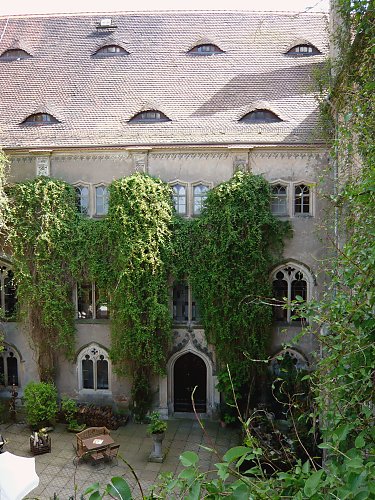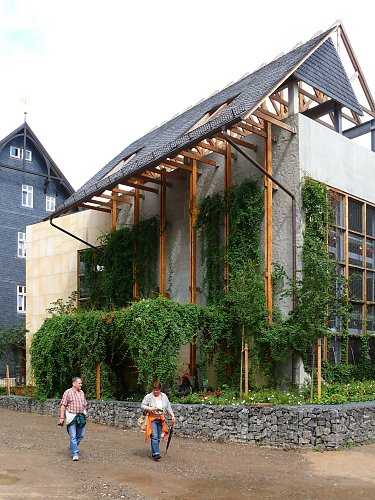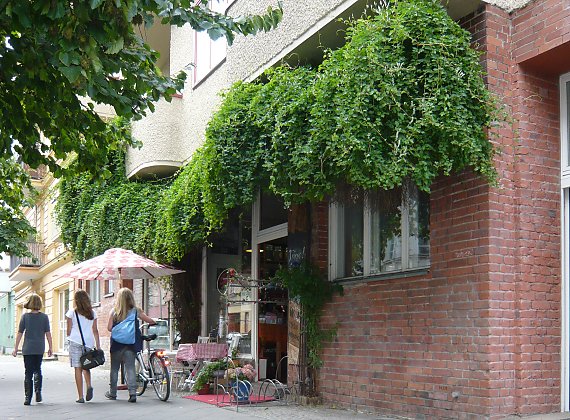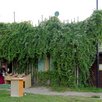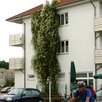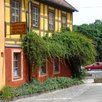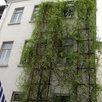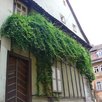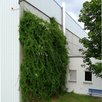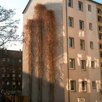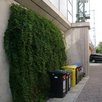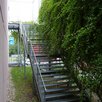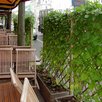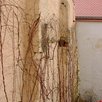Silver Lace Vine
Silver lace vine is a popular but somewhat controversial twining climber due to its extremely vigorous growth habit. This makes it an ideal plant to cover extensive areas quickly, but it can also grow too vigorously and be considered invasive. It should only be planted in places where enough space is available, or in a container to restrain its rootstock. High maintenance: it needs to be pruned often, so take this into consideration when you are planning for a high greening.
>>> Price
Polygonum (Fallopia) aubertii: Fleece vine, silver fleece vine, Russian vine
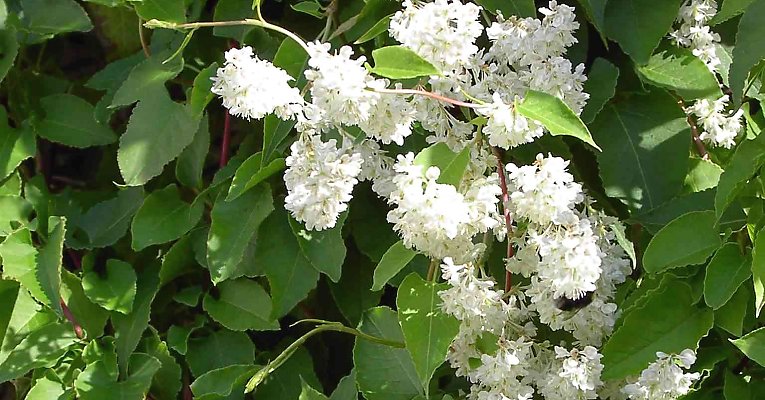
To Thrive...
Silver lace vine is happy in a sunny, semi-shaded, or shaded location. It is not very fussy in terms of soil, but moist and nutrient-rich soil will encourage growth and longer lasting foliage in autumn. Distance between plants: 4 - 8 metres when planted in the ground.
>>> Price
Characteristics and Pruning
This is a strong twiner -- one of the most vigorous climbers -- and can grow up to 20 meters high, up to 8 meters per year, forming dense leaf mats with overhanging / cascading / trailing shoots. As stem development is considerable, overgrowth on downpipes, lightning conductors, etc.. must be avoided at all costs (similar to wisteria). The trunk quickly becomes very thick. When planted together with other climbers, it will quickly displace other plants. New shoots starting March / April. With enough water and mild weather (and/or in a protected location), its foliage will last until November. Flowering is continuous from July to September; fruits are rare. Vigorous pruning towards the end of winter usually benefits the silver lace vine. Plant this vine only in areas which provide adequate space for its vigorous growth habit.
Climbing Supports for the Facade
Silver lace vine needs sturdy and rigid rod-like growth supports designed for the anticipated plant height and width. Lightning conductors, downpipes, eave gutters, and the like should not be reachable by the plant, so keep a distance (horizontally and vertically) of at least 1.5 m between climbing aids and such building elements. Follow the 'parallel trunk/stem guidance' as described for wisteria; shoots will need to be unwound from trellis rope. For suitable rope systems, see below. Use only a heavy / massive wire rope system, or when planting in a container: an easy basic, basic-s, or medium trellis.

Botanical Features
Here a closer look at the flowers, stems / trunks, and pruning... and also some examples of structural damage that fleece vine can cause. For preventing damage, this vine should be guided parallel to wire ropes, as described for wisteria.
Wire Rope Systems for Silver Lace Vine
Please click on the graphic illustrations for details!
| = suitable | = of limited suitability | = unsuitable |


